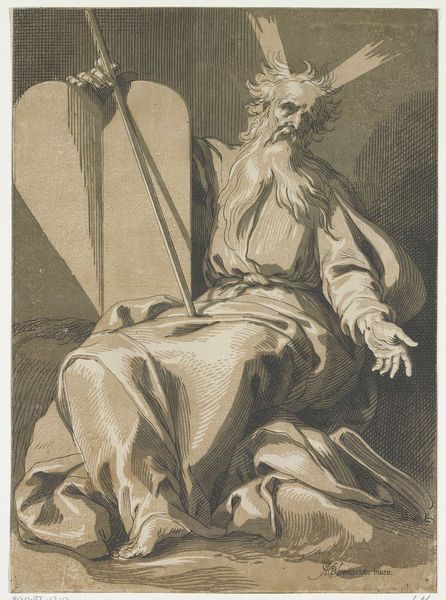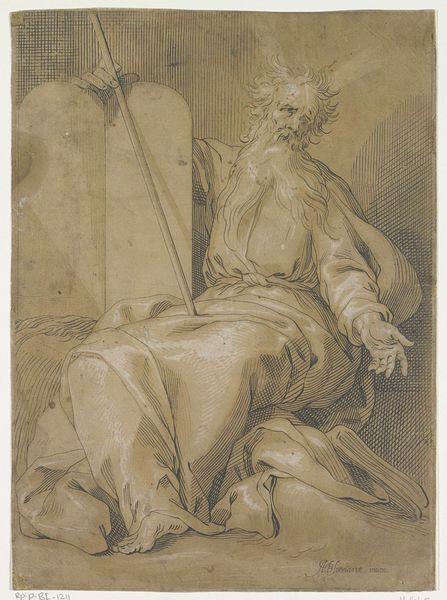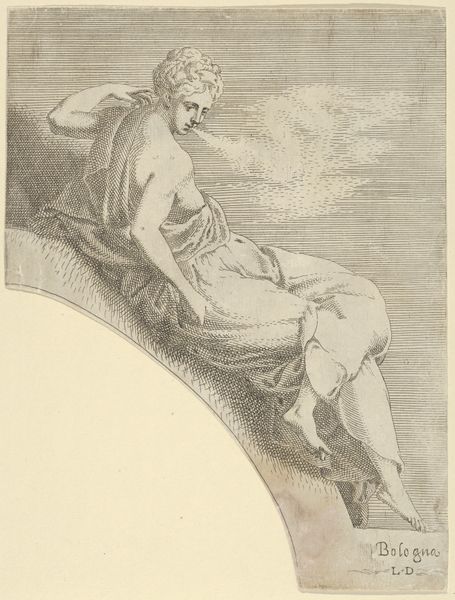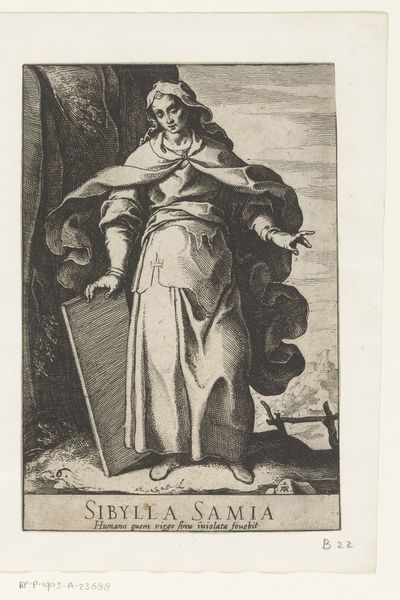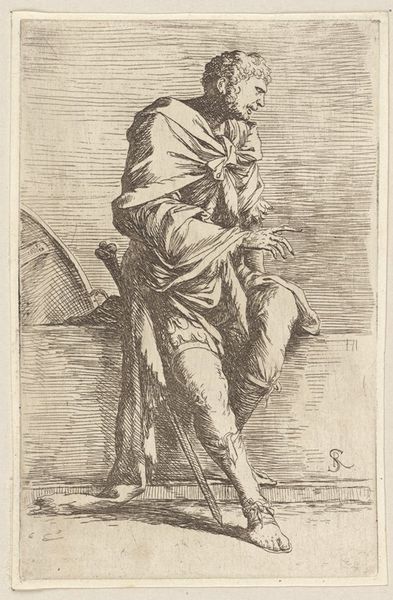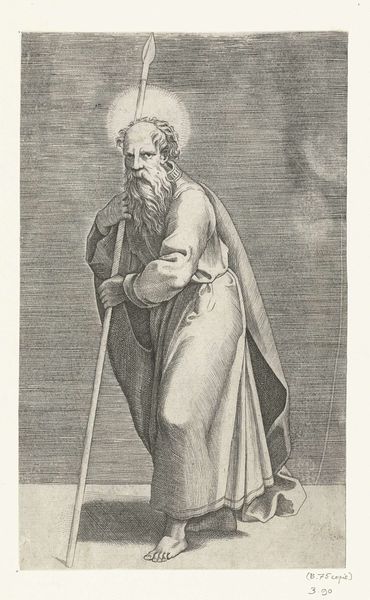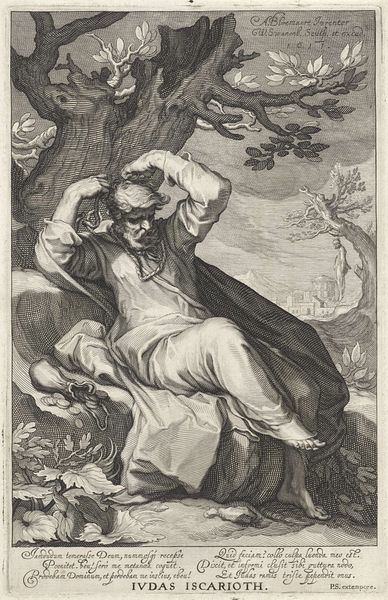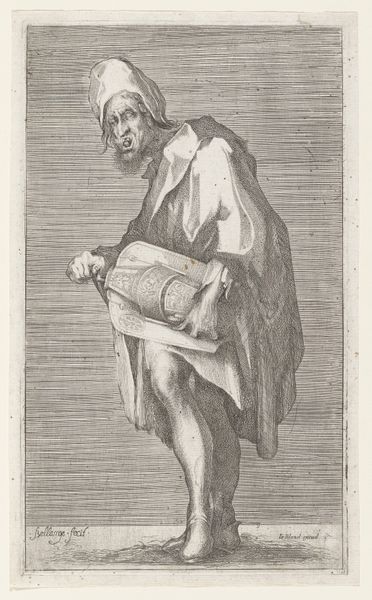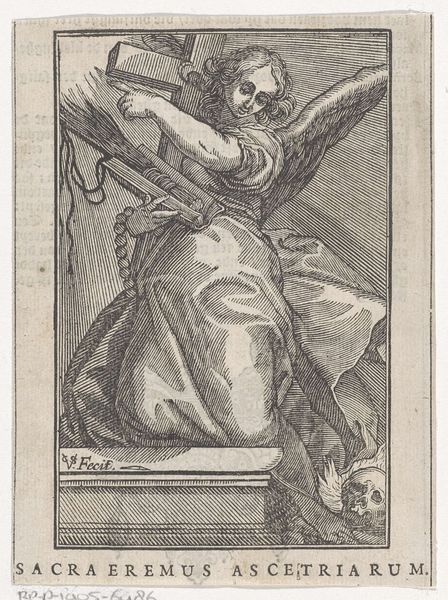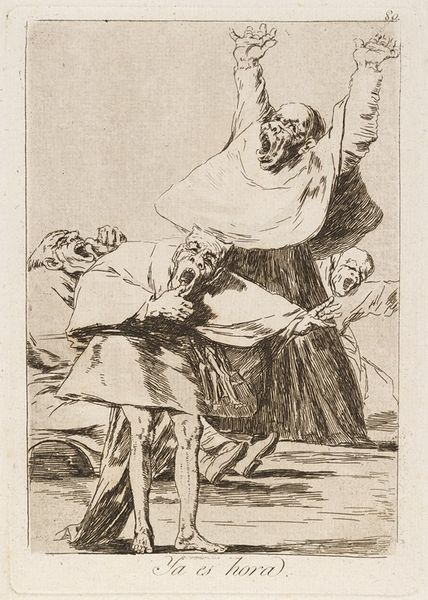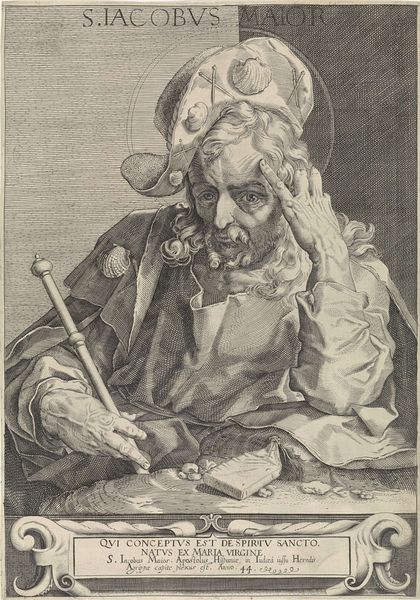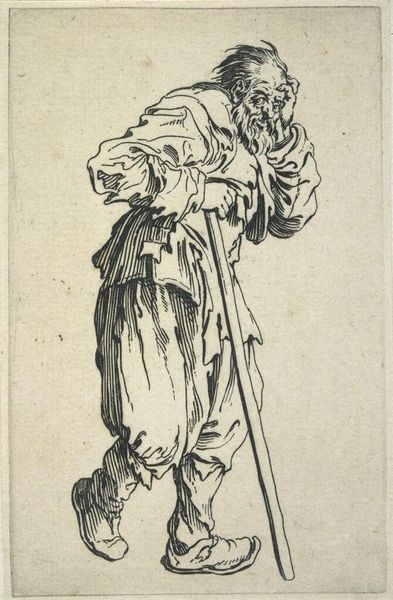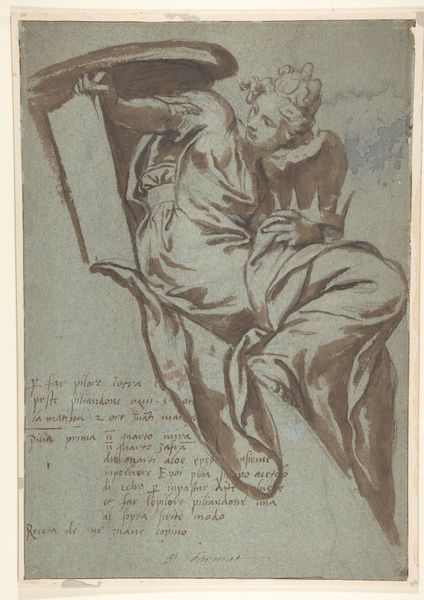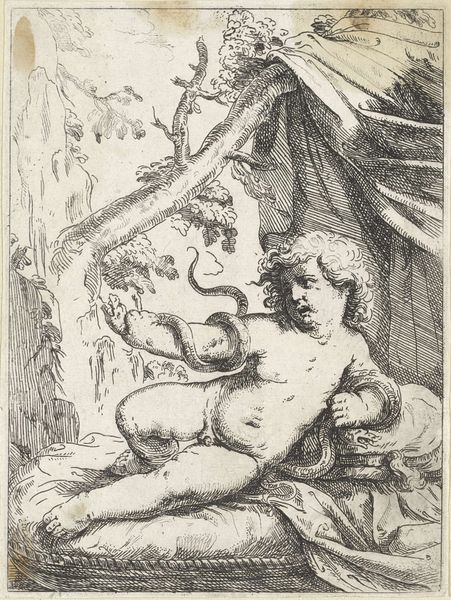
drawing, paper, ink, engraving
#
drawing
#
baroque
#
pencil sketch
#
figuration
#
paper
#
ink
#
pen-ink sketch
#
history-painting
#
engraving
Dimensions: height 314 mm, width 228 mm
Copyright: Rijks Museum: Open Domain
Editor: Here we have *Moses with the Tablets of the Law*, an ink and engraving drawing on paper, dating from after 1610 and currently held in the Rijksmuseum. What strikes me is Moses' introspective gaze, the weight of responsibility etched onto his face. What do you see in this piece? Curator: Beyond the immediately recognizable subject matter, I see an embodiment of the complexities of leadership and divine law. Consider the historical context: the Dutch Republic, grappling with its own newfound freedoms and religious interpretations. This image of Moses isn’t simply a biblical illustration. It’s a commentary on power, obedience, and the challenges of interpreting and enforcing moral codes in a rapidly changing society. Do you see the tension in his posture? Editor: Yes, he seems burdened, almost defeated. Is that intentional? Curator: Absolutely. Think about the political discourse of the time. The engraving isn't just portraying Moses as a divinely appointed leader. It’s subtly questioning the very nature of authority. Is adherence to rigid laws always just? What about individual conscience? The image invites us to contemplate these questions, to consider how power dynamics operate within religious and political structures. And how might we reimagine those structures today? Editor: So, it’s less about blind faith and more about critically engaging with the law? Curator: Precisely. And that critical engagement extends to us, the viewers. It demands we consider our own relationship to systems of power, and our responsibility in shaping a more equitable world. Editor: I hadn't thought about it that way. I was focused on the biblical story itself, not the potential sociopolitical commentary. Curator: Art often functions on multiple levels. Examining its historical and social context unlocks deeper, more relevant meanings. Editor: I'll definitely carry that with me. It encourages you to not just see, but also to think, about what you are seeing.
Comments
No comments
Be the first to comment and join the conversation on the ultimate creative platform.
